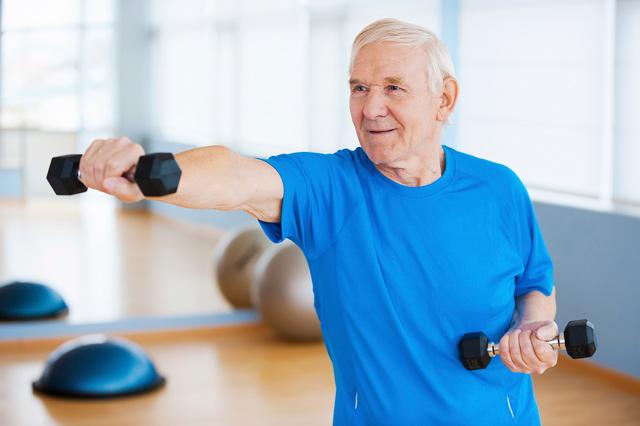You are here
Exercise linked to lower risk of premature death in older women
By Reuters - Nov 08,2017 - Last updated at Nov 09,2017

Photo courtesy of wellcare.com
Older women who get more moderate to vigorous physical activity may be less likely to die prematurely than their counterparts who do not get much exercise, a US study suggests.
The study involved more than 17,700 women with an average age of 72 who were asked to wear accelerometres every day for a week. Researchers followed the participants for more than two years on average. During this time, 207 women died.
When the researchers sorted women into four groups from most to least active, they found those who got the most moderate to vigorous physical activity, such as brisk walking, were up to 70 per cent less likely to die during the study period. Getting more low-intensity activity, however, did not appear to influence the odds of death.
“The fact that physical activity lowers the risk of premature mortality is not a new fact — we have many studies showing this,” said lead study author I-Min Lee of Harvard Medical School and Brigham and Women’s Hospital in Boston.
“However, previous studies have primarily relied on self-reported physical activity and self-reports tend to be imprecise,” Lee said by e-mail.
Earlier studies based on participants’ own assessments of their activity levels have found regular exercise associated with up to about a 30 per cent reduction in mortality rates, Lee and colleagues note online November 6 in Circulation.
Accelerometers and other activity trackers are more reliable ways to examine the connection between longevity and exercise habits because they offer a more accurate picture of how much time people devote to exercise as well as how hard they work out and how much time they are sedentary in a typical day.
The accelerometres used in the current study could measure activity along three planes: up and down, front to back and side-to-side. This can help researchers see not just if people are moving, but the intensity of their movements.
Half of the participants spent at least 28 minutes in moderate to vigorous physical activity on an average day, or around 196 minutes a week.
Doctors typically advise people to get at least 150 minutes a week of moderate to vigorous exercise.
Even though some previous research has linked excessive sedentary time to a higher risk of premature death, the current study did not find an association between these two things.
One limitation of the study is that researchers didn’t follow women for very many years, which might make it hard to see long-term benefits of intense exercise for older women. In addition, even though researchers accounted for individual characteristics and medical issues, they relied on women to report their own health problems and this may have allowed some inaccurate or incomplete information to be used in the analysis.
It is also possible that the study results might not reflect what would happen for all older adults because these participants were avid exercisers, said Dr David Alter, a researcher at the University of Toronto who was not involved in the study.
“This study examined a healthy active group of women where we might have not expected to see any deleterious effects from sedentary behaviour,” Alter said by e-mail. “Had the researchers explored very sedentary non-exercise avid individuals, the results might have been [different].”
Even so, the findings add to a large body of evidence already linking moderate to vigorous physical activity to a lower risk of premature death, said Keith Diaz, a researcher at Columbia University Medical Centre in New York who was not involved in the study.
“Research shows individuals have a hard time estimating how many hours a day they are active or sitting,” Diaz said by e-mail. “So what’s relatively new about this study is that an activity monitor was used to more accurately determine how much time study participants spent active and sitting.”
Anyone who cannot handle a brisk walk every day can consider other options to get the benefits of moderate to vigorous physical activity, Diaz added.
“Swimming, bicycling, rowing, arm cycling, and seated steppers are all alternatives,” Diaz said.
Related Articles
People who get even a small amount of exercise may be less likely to die prematurely than their more sedentary counterparts, a research revi
Older adults with heart disease who regularly exercise, even a little bit, may live longer than they would without any physical activity, a
Lots of time sitting, and very little spent moving around, may contribute to loss of the ability to walk in old age, a large US study sugges














